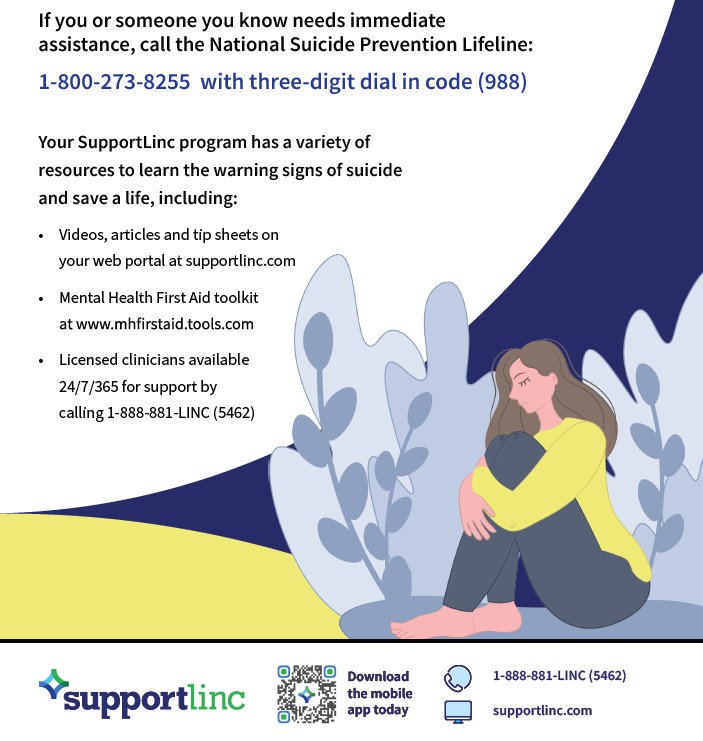Suicide is the 10th leading cause of death in the United States. It causes immeasurable pain, suffering and loss to individuals, families and communities nationwide. The causes of suicide are complex and determined by multiple combinations of factors, such as mental illness, substance abuse, painful losses, exposure to violence and social isolation.
Many people are uncomfortable with the topic of suicide. As a result, people rarely communicate openly about suicide. Therefore, an important public health problem is left hidden in secrecy, which can hinder effective prevention efforts.
Preventing suicide
Although it may be difficult to approach the topic of suicide, reach out to those who are in distress. Often, family and friends are the first to recognize the warning signs of suicide and can be the first step toward helping an at-risk individual find treatment with someone who specializes in diagnosing and treating mental health conditions.
5 steps for helping someone who may be suicidal
• Ask: “Are you thinking about killing yourself?” It’s not an easy question but studies show that asking at-risk individuals if they are suicidal does not increase suicides or suicidal thoughts.
• Keep them safe: Reducing a suicidal person’s access to highly lethal items or places is an important part of suicide prevention. While this is not always easy, asking if the at-risk person has a plan and removing or disabling the lethal means can make a difference.
• Be there: Listen carefully and learn what the individual is thinking and feeling. Findings suggest acknowledging and talking about suicide may in fact reduce rather than increase suicidal thoughts.
• Help them connect: Save the National Suicide Prevention Lifeline’s number in your phone so it’s there when you need it: 1-800-273-TALK (8255). You can also help the at-risk person make a connection with a trusted individual like a family member, friend, spiritual advisor or mental health professional to reach out to when suicidal thoughts arise.
• Stay connected: Staying in touch after a crisis or after being discharged from care can make a difference. Studies have shown the number of suicide deaths goes down when someone follows up with the at-risk person.
It can be frightening when a friend or loved one reveals or shows signs of suicidal thoughts. If you or someone you know is having thoughts of suicide, call the toll-free National Suicide Prevention Lifeline at 1-800-273-TALK (1-800-273-8255), 24 hours a day, seven days a week or visit the National Suicide Prevention Lifeline at https://suicidepreventionlifeline.org. In an emergency, dial 911 immediately.
For in-the-moment support and a referral to professional, short-term counseling, call SupportLinc, your employee assistance program at 1-888-881-LINC (5462). SupportLinc provides confidential assistance and resources 24 hours a day, 365 days a year.
More resources from SupportLinc, your EAP.
Tips for staying mentally healthy
Suicide prevention in the workplace

